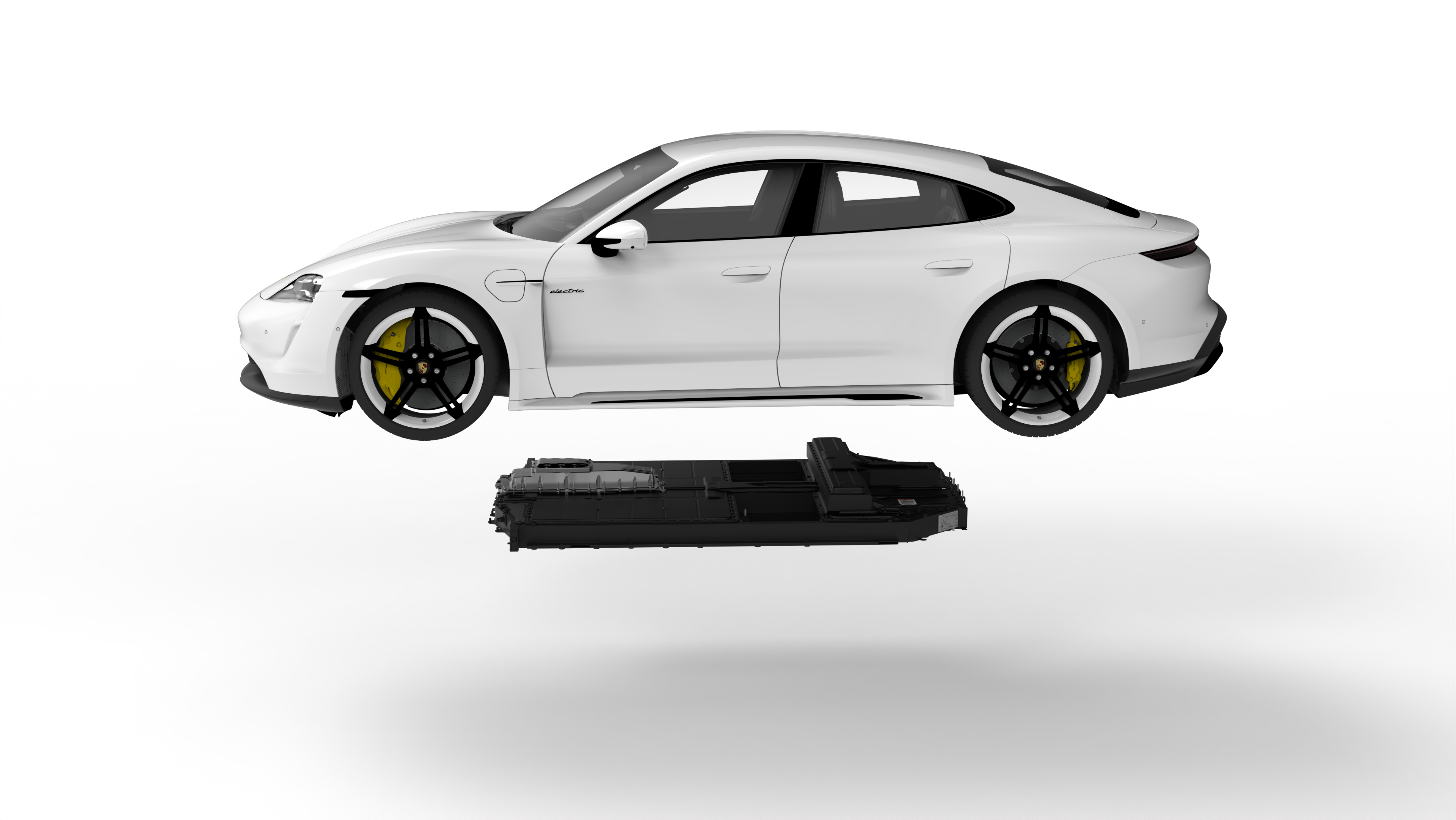 Taycan Batterie. Foto: POrsche AG
Taycan Batterie. Foto: POrsche AG
By 2030, Porsche is aiming for balance sheet CO₂ neutrality along the entire value chain. The company’s production and logistics schedule is consistently coordinated with this. However, the decisive role is played by progress in electromobility. Almost half of all CO2 emissions in the life cycle of an electric vehicle are generated during its manufacture. This includes raw material extraction and processing. The second biggest factor is operation, which is determined by the energy mix, charging and vehicle efficiency, and driving style. Recovery and recycling at the end of the cycle have the lowest CO2 emissions. Of the individual factors, the drive battery in particular has a major impact on CO2 emissions over the life cycle: around 40 percent of the carbon dioxide produced in the manufacture of a single Taycan can be traced back to the battery. In other words, the size of the energy storage is largely responsible for the emissions balance of an electric vehicle. But also for market success: After all, the dimensioning has to meet the demands and expectations of the customers.
On page 42 of the current issue of the eMove360° magazine in german language, you can read an exciting article about how the sports car manufacturer wants to strike the optimal balance between the sometimes conflicting requirements when it comes to battery size.